Over the last 5-10 years, LinkedIn has become an essential personal branding platform and a really useful tool for jobseekers. As many as 90% of recruiters regularly use LinkedIn to find suitable candidates, so if you’re looking for a new role, you’re missing a trick if your LinkedIn profile isn’t up-to-date and properly optimised.
Three of our Associate Consultants, George Molyneux Buckley, Cameran Waite and Lucy Wickham have all helped candidates secure new roles after connecting with them on LinkedIn. In this blog, they explain how they use LinkedIn to find suitable candidates, and advise how lawyers looking to move should use the platform as part of their job search.
George, our construction and commercial insurance recruitment specialist, explains how recruiters use LinkedIn and why it’s so important.
What makes LinkedIn so important for recruiters?
LinkedIn is an excellent tool for both sales and marketing. Not only does it enable recruiters to make new connections and advertise job opportunities free of charge, but it allows us to build our brands and enhance our reputation, which is key.
How do recruiters use LinkedIn to find candidates?
Recruiters use LinkedIn to actively search for the right candidates and encourage the right candidates to make contact with them.
Sometimes, a carefully put-together job advert/LinkedIn post can take some of the hard work away by attracting interest from those inside or even outside one’s current network.
In terms of searching for the right candidates, a straightforward search using the search bar at the top of the page will deliver some relevant results. However, recruiters could not hope to find all relevant candidates by doing that alone.
A Boolean search is a good starting point. Boolean searches help to clearly define and limit search results by combining words and phrases through using the words, AND, OR and NOT. By way of example, if I were looking for a qualified lawyer who specialises in ingress of water claims, I might search for, “Property Litigation” AND Solicitor.
From there, LinkedIn allows us to narrow down search results by location, connections in common (including the names of any connections) and the names of current and previous employers.
Some LinkedIn profiles have very limited information, so it can be difficult to confirm exactly what some lawyers do. In those cases, cross-referencing LinkedIn profiles with law firms’ websites and the websites of the Law Society and Chartered Institute of Legal Executives can be necessary in order to ensure that candidates are indeed suitable for the role at hand.
If you’re actively looking for a new role, there are a number of ways you can utilise LinkedIn in your search. Residential conveyancing recruitment specialist Cameran explains a little more.
How should candidates use LinkedIn to find their next legal job?
LinkedIn is a fantastic tool for securing and exploring new opportunities.
Firstly, it’s important to ensure that your profile is up to date and includes a specific job title in your headline e.g., ‘Residential Conveyancing Solicitor’. Doing so will help ensure that your profile appears in searches carried out by recruiters when they are looking for suitable candidates.
Secondly, if you are actively looking for your next role, LinkedIn has a discreet function where you can set your profile to ‘open to work’ so that recruiters and hiring managers know that you are actively looking for a new opportunity and what your preference would be. This is a completely private function and not visible to the public/ your current firm.
Lastly, you can use LinkedIn to expand your network and make yourself known to specific hiring managers, recruiters and employers. If there is a particular firm or area of law that you are keen to progress within, connecting with lawyers/recruiters working at that firm or within that practice area is an easy way to keep updated and front of mind with any suitable positions. Most hiring managers (and many recruiters) will post vacancies via LinkedIn before the roles are advertised on sites like Reed and Indeed, seeing these openings before your competition will put you in good stead moving forward.
Are there any drawbacks to using LinkedIn to find your next legal job?
LinkedIn is a powerful job search tool, but like most things, it requires two-way participation to be most effective. Having an updated profile and an extended network will make your profile more visible to hiring managers and recruiters, improving the engagement you are likely to encounter and the number/relevance of roles you might be considered for.
Spending 15 minutes on LinkedIn a week, engaging with posts, checking your messages and updating your bio as your career progresses is an easy way to fully utilise LinkedIn and help boost your chances in your job search.
Lucy, who specialises in the recruitment of family lawyers in Yorkshire, explains how she has connected with candidates on LinkedIn before helping them make a move. She also explains the most common mistakes she sees lawyers making on the platform.
Do you have any examples of candidates who have used LinkedIn to successfully get their next job?
Yes, on many occasions, I have connected with lawyers on LinkedIn, spoken with some who have been open to new opportunities, and then gone on to help them move to a new firm. I have also had family lawyers approach me directly, after seeing my posts on LinkedIn and seeing I specialise in their area of law. As Cameran mentioned above, if lawyers are open to new opportunities, they can set their profiles to ‘open to work’, to enable recruitment consultants to find them through LinkedIn Recruiter who may approach them with suitable roles.
Are there any common mistakes or pitfalls usually made by candidates when looking for their next job on LinkedIn?
There are a number of mistakes I see candidates make which have the potential to hinder their job search including:
- Not optimising their profiles by including relevant and specific keywords
Most importantly, these keywords should relate to their job title and practice area. For instance, a family solicitor should include the keyword ‘family solicitor’ or ‘family lawyer’ in their headline and ‘about’ section of their profiles; those who don’t use specific keywords to specify which practice area they work in are unlikely to be found by recruiters and hiring managers.
- Not having a profile picture
According to LinkedIn, profiles with a photo are viewed 21 times more than those without one, so it’s essential that you have one if you’re serious about using the platform in your job search.
- Not having the LinkedIn app or having notifications set up
Installing the LinkedIn app on your phone (and ensuring notifications are turned on) will mean that you’re less likely to miss a message from a recruiter or hiring manager about your dream role. It also means you can update your profile and build your network while you’re on the go.
- Not having an extensive network
It’s important for lawyers to build up their networks on LinkedIn by connecting with others, whether that be their peers, colleagues and others working within their practice area. Those with more connections and who engage more with other users are more likely to get noticed.
As you can see, if you’re in the market for a new job, fully utilising your LinkedIn profile will undoubtedly maximise your chances of getting hired. If you’re looking for a new and exciting opportunity, our team can help you. Get in touch with specialist consultants 03300 245 606 or contact us via this website for a confidential chat about your career.




